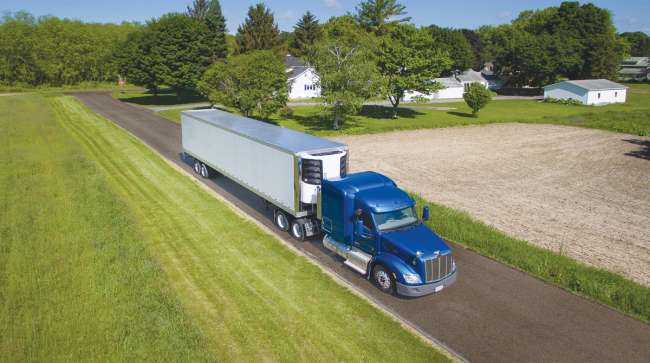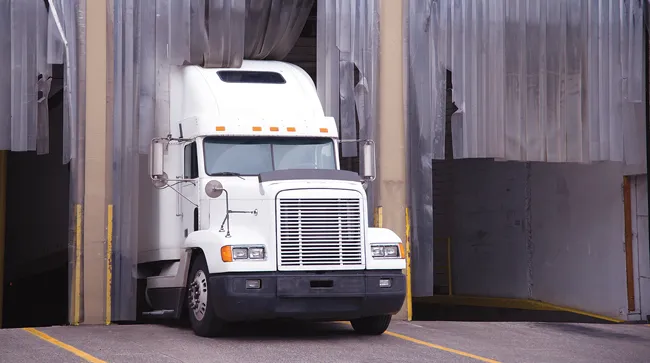Staff Reporter
Refrigerated Rates’ Near-Term Upside Likely Limited: FTR

[Stay on top of transportation news: Get TTNews in your inbox.]
Significant upside in refrigerated transportation rates is unlikely before the end of 2024, although rates are unlikely to go any lower in the run-up to Thanksgiving and Christmas, according to analysts at FTR Transportation Intelligence.
Rates will improve in 2025, however, as will volumes, FTR Vice President of Trucking Avery Vise said during the research group’s Q4 2024 Food Industry Economic and Transportation Update on Oct. 17.
“Rates are not likely to go any lower than they are. We certainly are not seeing any sign of that. We do expect to see some modest rate inflation. But it all needs to be kept in perspective. We were down nearly 19% in 2023 from that really big peak that we had at the beginning of 2022,” Vise told attendees of the webinar, which was held in conjunction with the Food Shippers of America trade association.
“We’re just not seeing anything that indicates any kind of inflection in the [spot] market yet,” he said. “Even though we do expect to see some upturn in rates, we do not expect to see anything in the near term, anything in the forecast horizon, that is going to match the kind of rate inflation that we have seen in [the past two 2018 and 2021 fall] cycles.”

Vise
Part of that is because of the ongoing excess of capacity across all segments of the freight market.
Small carriers have seen more patience from lenders and therefore more of them remain in business than typically would have been expected given where rates are, said Vise.
Also, carriers have remained in the market in larger numbers than expected because smaller haulers and third-party logistics companies have become better at using technology to their advantage, he said.
According to Federal Motor Carrier Safety Administration data, through September, there were 92,000 more authorized trucking firms than in February 2020, an increase of 36%.
As a result, FTR expects total truckload spot rates to be flat in 2024, although Vise said the impact of recent hurricanes may boost rates. FTR expects total truckload spot rates to increase 6.5% in 2025, without including fuel surcharges.

While refrigerated rates may not have much near-term upside, they're also unlikely to go any lower in the run-up to Thanksgiving and Christmas, FTR said. (vitpho/Getty Images)
In the refrigerated segment of the market, FTR expects spot truckload rates to be up about 2% in 2024 and jump 9% in 2025 after falling 18% in 2023.
Dry van spot truckload rates, meanwhile, are set to increase around 1.5% in 2024, according to FTR, and increase by between 6% and 7% in 2025.
On the contract side of the market, FTR expects total truckload rates to fall 4% in 2024 before rising 2% in 2025.
Analysts at the research firm expects reefer truckload contract rates to decrease 4.5% in 2024 and increase 3.5% in 2025, Vise said. FTR expects dry van truckload contract rates to decrease more than 3% in 2024 and climb 2.5% in 2025.

Starks
FTR Chairman Eric Starks told attendees that rates would not increase substantially without a significant decrease in carriers or jump in demand.
Freight tonnage fell in September after rising for two straight months, American Trucking Associations reported Oct. 22.
ATA’s For-Hire Truck Tonnage Index slid 2.1% to 113.2 from August. The index was also 0.9 percentage point higher than in September 2023. August posted the only year-on-year gain in 2024.

Costello
“Freight has been very choppy this year, but despite the latest drop, tonnage is up 1.8% since hitting a low in January. No doubt, the climb up has been slow and difficult as manufacturing activity remains flat, but the trend is up, not down,” said ATA Chief Economist Bob Costello.
Meanwhile, the Census Bureau said Oct. 17 that overall retail sales in September were up 0.4% month on month on a seasonally adjusted basis and up 1.7% unadjusted year over year. That compared with increases of 0.1% month over month and 2.2% year over year in August.
“While there have been some signs of tightening in consumer spending, September’s numbers show consumers are willing to spend where they see value,” National Retail Federation Chief Economist Jack Kleinhenz said in response to the data.
Still, volumes in some refrigerated transportation segments are growing and the pace of growth accelerated in recent weeks, according to one of the largest carriers in the segment.
Want more news? Listen to today's daily briefing above or go here for more info
Shipments of natural and organic products by United Natural Foods Inc. in the three months that ended Aug. 3 rose 5% year on year and grew even faster through the end of September, CEO J. Alexander Douglas told analysts during an Oct. 2 earnings call.
UNFI ranks No. 14 on Transport Topics’ Top 100 list of the largest private carriers in North America and No. 1 among grocery carriers.
Overall though, freight volumes won’t begin to truly climb until the second quarter of 2025, Vise told attendees of the webinar.
Refrigerated van food loadings are expected to see a 1.5% rise in 2024 and increase 2.8% in 2025, he said, adding that dry van food loadings are likely to increase by less than 0.5% in 2024 and grow 2% in 2025.




